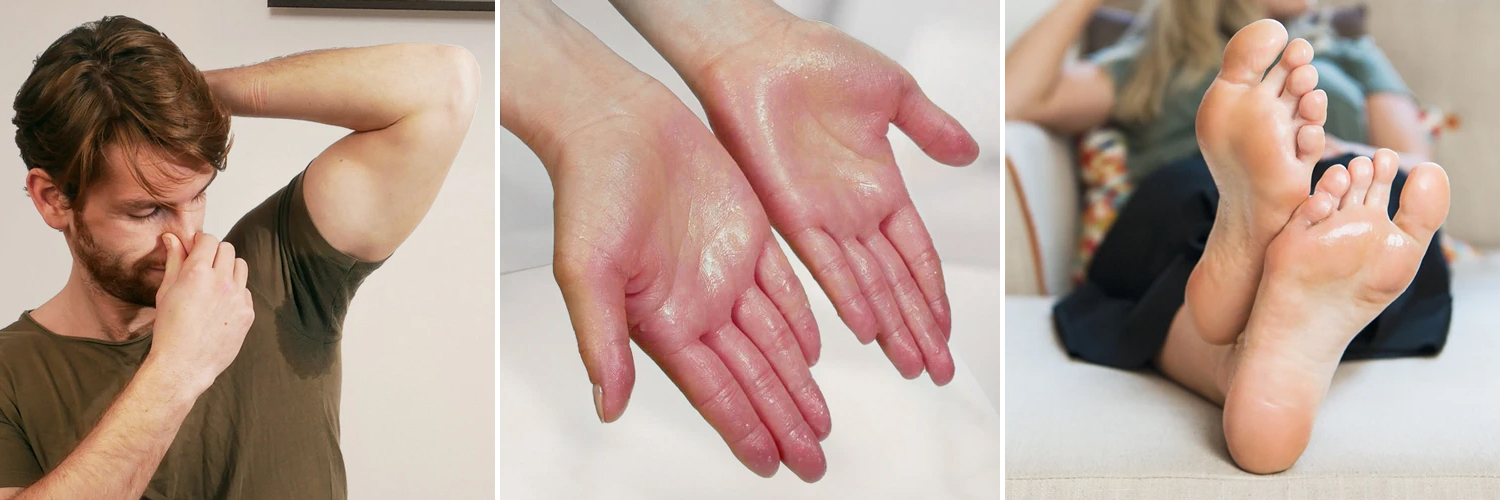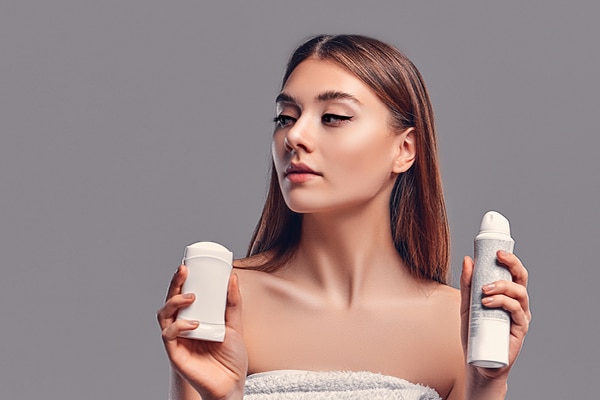Targeted Dermatology Treatments for Hyperhydrosis of Hands and Feet: Effective Solutions
Targeted Dermatology Treatments for Hyperhydrosis of Hands and Feet: Effective Solutions
Blog Article
Introducing the Complexities of Excessive Sweating: A Comprehensive Overview to Diagnosis and Monitoring
Extreme sweating, clinically understood as hyperhidrosis, is a problem that influences a significant number of individuals and can have an extensive impact on their quality of life. While sweating is an all-natural bodily function, its overactivity in hyperhidrosis provides an unique set of challenges that usually go past mere pain.

Recognizing Hyperhidrosis Causes
Hyperhidrosis triggers can be credited to various elements such as genetics, hormonal imbalances, and certain medical problems. Genetics play a substantial function in primary focal hyperhidrosis, where people acquire the condition from their household participants. This kind of hyperhidrosis often materializes in specific areas like the palms, soles of the feet, underarms, and face. Hormone imbalances, specifically an overactive thyroid gland or menopausal modifications, can likewise cause excessive sweating. Furthermore, particular clinical conditions such as diabetes mellitus, cardiovascular disease, and infections can cause secondary generalized hyperhidrosis. These underlying health and wellness concerns can interrupt the body's natural air conditioning system, creating the sweat glands to end up being overactive. Understanding the source of hyperhidrosis is vital in diagnosing and efficiently handling this problem. By recognizing the details elements adding to excessive sweating, medical care companies can tailor treatment strategies to attend to the underlying cause, providing relief and enhancing the lifestyle for people impacted by hyperhidrosis.
Identifying Hyperhidrosis Effects

Moreover, hyperhidrosis signs may manifest in psychological and social distress, as individuals might feel humiliated or distressed about their sweating, resulting in evasion of social situations (Sweaty hands treatment). Furthermore, duplicated episodes of too much sweating can result in skin maceration, fungal infections, and a general decrease in self-worth
Diagnostic Process for Hyperhidrosis
Initiating the analysis process for too much sweating includes thorough analysis of the person's case history and physical exam. Making inquiries concerning the beginning, duration, and triggers of sweating episodes is critical to distinguish between key focal hyperhidrosis and additional generalised hyperhidrosis. Case history must additionally include concerns concerning medications, clinical conditions, and household background of hyperhidrosis.
During the health examination, certain attention is paid to the areas influenced by sweating. The health care provider may examine the level of sweating, check for indications of underlying problems, and review the effect of sweating on the person's lifestyle. Additionally, specific examinations like the gravimetric examination, starch-iodine test, or skin conductance dimensions may be performed to quantify the amount of sweat produced.
In addition, in cases where second hyperhidrosis is presumed, extra examinations such as blood tests, pee examinations, and imaging studies may be advised to identify the underlying cause of extreme sweating. The diagnostic process aims to precisely establish the kind and source of hyperhidrosis to guide ideal monitoring strategies.
Therapy Choices for Hyperhidrosis
When addressing extreme sweating, various therapy options are offered to relieve symptoms and enhance the person's lifestyle. The treatment approach for hyperhidrosis depends upon the extent of signs and symptoms and the person's feedback to first treatments.
Topical treatments, such as aluminum-based antiperspirants, are usually recommended as the initial line of protection for taking care of moderate situations of hyperhidrosis. These items function by connecting the sweat ducts, thus decreasing the amount of sweat that reaches the skin's surface area. For people with much more serious symptoms, dental drugs like anticholinergics may be prescribed to assist reduce sweating. Nonetheless, these medicines can have negative effects and are not suitable for every person.

Effective Monitoring Techniques
To efficiently take care of hyperhidrosis, a extensive and customized treatment plan customized to the person's details needs and action to previous therapies is necessary. This strategy may integrate a mix of restorative approaches, including way of life alterations, topical treatments, oral drugs, botulinum toxin shots, iontophoresis, and in extreme instances, surgical treatments like gland removal or sympathectomy. Way of life alterations such as wearing moisture-wicking apparel, using antiperspirants, and practicing stress-reducing methods can enhance clinical treatments. Topical antiperspirants containing aluminum chloride are usually the first-line treatment, with stronger formulas readily available for immune instances. Oral medications like anticholinergics might be prescribed for generalised hyperhidrosis. Botulinum contaminant injections are reliable for focal hyperhidrosis, giving temporary relief by blocking the launch of acetylcholine. Iontophoresis, including using a reduced electric existing to reduce sweat gland task, can be advantageous for both palmoplantar and axillary hyperhidrosis. Surgical choices are normally booked for serious, refractory situations and need cautious consideration of threats and advantages. A Treatment for hyperhydrosis of hands multidisciplinary method involving skin specialists, medical care doctors, and, if required, specialists, can optimize the monitoring of hyperhidrosis.
Verdict
To conclude, hyperhidrosis is a condition identified by extreme sweating, which can greatly influence an individual's quality of life. By recognizing the causes, identifying the signs, and going through the analysis process, healthcare providers can successfully manage this problem. Treatment alternatives include topical medications, dental medications, shots, and even surgeries in serious cases. With correct diagnosis and monitoring techniques, people dealing with hyperhidrosis can locate relief and boost their overall wellness.
Excessive sweating, clinically known as hyperhidrosis, is a problem that influences a significant number of people and can have a profound influence on their quality of life. By recognizing the specific elements adding to excessive sweating, health care carriers can tailor treatment strategies to deal with the underlying reason, providing alleviation and boosting the quality of life for individuals impacted by hyperhidrosis.
Hyperhidrosis, characterized by excessive sweating beyond what is necessary for regulating body temperature, can substantially influence an individual's top quality of life. Making inquiries about the onset, duration, and activates of sweating episodes is critical to differentiate between key focal hyperhidrosis and secondary generalized hyperhidrosis. Treatment for hyperhydrosis of hands and feet.In conclusion, hyperhidrosis is a condition characterized by excessive sweating, which can significantly affect an individual's high quality of life
Report this page